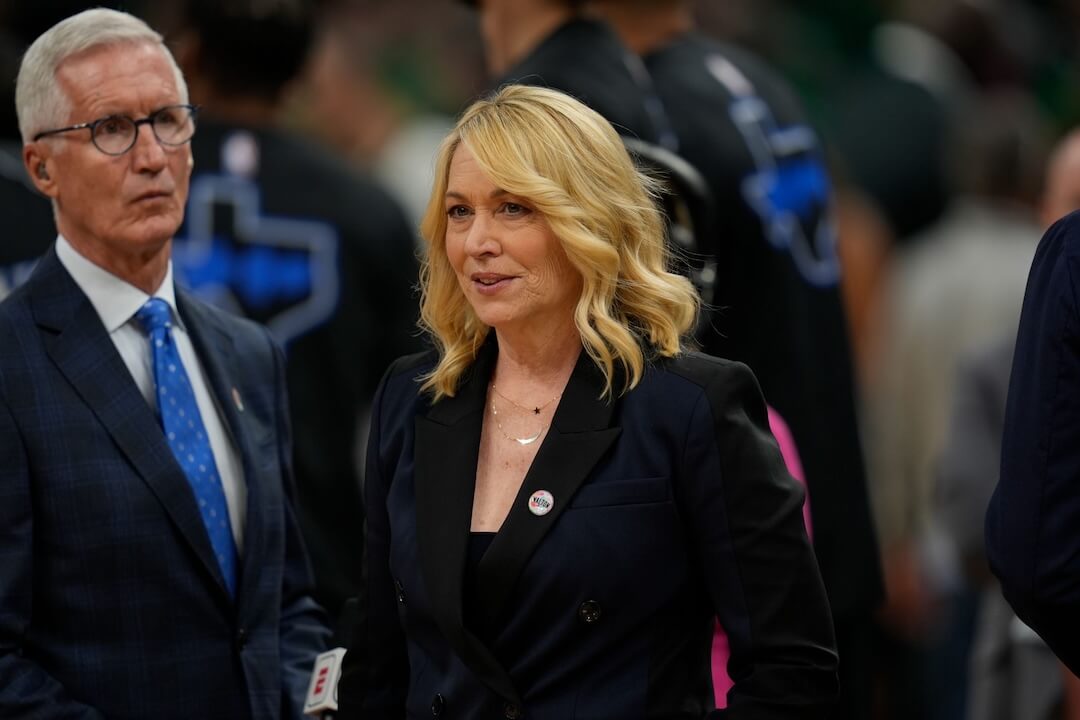Whenever I read a story I admire, the first question that pops into my head is, “How did you do it?”
That happened again just the other day when I read a magical story by Kevin Pang, a talented young writer for the Chicago Tribune. Set in a Chicago children’s hospital, “Nothing up sleeve but friendship” focuses on the relationship between a hospital volunteer, magician Mike Walton, and a 15-year-old patient named Arthur Palos. Published in June, the story is the literary equivalent of “chicken-skin music” — that is, the kind that raises goosebumps. It was such a compelling read, I had to know: How did he do it?
In an industry where training is woefully underfunded, non-existent and by necessity ad hoc, sharing the lessons of great reporting and writing remains one of the best ways to learn the craft. It’s the spirit behind the “Best Newspaper Writing” series, The Providence Journal’s “Power of Words” Web site, Lee Enterprises’ “Writing Matters,” Bob Baker’s “NewsThinking” and “No Train No Gain,” home base for newspaper training editors and coaches.
As Ben Yagoda notes in “The Sound on the Page:” “Writers can be divided into two categories: those who obsessively pick apart what they do and those who flee from analysis as if it were a killer wave. The latter group sees writing as art (inspiration), the former as craft (perspiration).”
Fortunately, Kevin Pang falls into the former group, as you’ll see from our e-mail interview. Pang is 24, and has been a reporter at the Chicago Tribune since September 2004. He previously worked at the Los Angeles Times and interned at The Arizona Republic and King County Journal in his home state of Washington. At the Tribune, he spent eight months as metro reporter and in April, joined the staff of “At Play,” the paper’s newly launched Thursday entertainment/going out/doing stuff section.
Chip Scanlan: How did you get the story idea?
Kevin Pang: I’ve always had an interest in card tricks and such; in fact, I made my way through college performing at fraternity parties. My mentor at the Chicago Tribune, Flynn McRoberts, pointed me to an organization on the ‘Net that was looking for magicians to perform at hospitals. Originally, I wanted to join the group, Open Heart Magic, and write a first-person piece. But I wasn’t ready as a writer to tackle that. So I called up the founder, Mike Walton, in December of 2004 and told him I’d be interested in profiling his organization.
How much time did you spend reporting?
Mike Walton performed at the hospital every week. With the exception of one, I was there for every visit, from January through May. Later on, when I decided to focus on Arthur, I visited him and his mom at least once a week. I was present the day before, the day of, and the day after Arthur’s surgery.
Like so many strong narratives, the piece seemed to rely on access to the hospital, the patients and Walton. How did you go about securing it? What lessons did that teach you?
Hospitals are notoriously difficult for reporters, especially since HIPAA (Health Insurance Portability and Accountability Act) went into effect. So I went through the hospital’s child life services department. I convinced them the story would showcase the organization and the wonderful effects it had on children. I also told them I would use first names only. Of course, Arthur’s mom, Tina, gave me the OK to use their last name.
The opening scene focused on a magic trick and revealed the power of magic on the body and, by implication, the spirit. It required you to be alert to the numbers on the EKG. What prepared you so you were alert to those signals?
By the time I got to Sarah, the 11-year-old girl in the opening section, [I’d] already seen Walton perform for 75 kids or so. It became repetitive, so I focused on something else — in this case, the EKG monitor. I wrote down each number. I watched the sine wave become narrower and tighter. When that heart rate jumped as the playing card was revealed, I had one of those “Man, thank God I’m a reporter” moments. Describing a smile would have been the easy way out; besides, people can fake one. Here was incontrovertible proof that this magic stuff had a physical effect on the patients.
The story shifts between dramatic and summary narrative, the “show and tell” of storytelling. How did you decide which and when to use one or the other?
It wasn’t a conscious decision to switch between the summary and narrative device. It just felt natural to switch the camera from fly on the wall to narrarator at those moments. I didn’t want to reveal why Arthur’s health was becoming progressively worse until the two-thirds point. Part of the mystery was Walton’s refusal to know and the theme of emotional detachment. The reader learned of Arthur’s condition at about the same chronological point that Walton did, at that last possible moment that Walton couldn’t take it anymore and had to ask someone.
Can you talk about the structure of the piece? How it was organized? Why that way? Any special challenges during drafting or revision?
I wrote the story in short, 12- to 15-inch sections. Some editors might see that as laziness, that I don’t know how to write transitions. I disagree with that. First, it gave readers a mental break, and the ultimate goal was to have them get from the first letter to the last period. Second, cliffhangers pack an emotional wallop and are essential in stringing the reader along. Lastly, dividing the story into six sections gave me a chance to write six leads and six kickers.
You worked on it for six months, I believe. How do you know you had enough material?
There were two possible outcomes to the story. Arthur dies or Arthur lives. As perverse as it sounds, I knew I had my ending as soon as one of the two happened. Thank goodness it was the latter. Also, I attended Southern Cal, best known for their film school (and number-one football team in the country). A lot of my filmmaker friends told me they shoot documentaries at a 14-to-1 ratio, that is, for every seven hours of footage they record, 30 minutes make it to air. I took that advice to heart.
Were you working on other stories?
Oh yes. Obituaries, shootings, fires, immigration stories, the tsunami in Asia, etc. I kept a folder of long-term projects, medium enterprise pieces, and dealt with the dailies as I got them.
How did you go about collecting everything that went into the story — from the scenes to details about the characters, medical info, etc.?
Nothing all journalists don’t already do: keep two pens and a spare notepad in the car, talk to everyone, get their cell phones to follow up and just the simple act of being there.
Was it hard to stick with a piece this long? How did you stay connected, pumped up? What role did patience play?
Having a mentor, or an advocate who isn’t an editor, is key to keeping one’s sanity during long projects. My mentor Flynn and colleague Rex Huppke encouraged me to breathe, be patient and to see the story’s potential. It could have easily been a B-1 Monday feature assigned to the summer intern, or a Sunday Page One story.
What surprised you most about the reporting and writing?
How humbling this process was. And how generous my colleagues were with their time. Their selflessness and patience floors me to no end. Between all the afternoon chit-chats at the Starbucks across the street, I must have bought enough Venti Cappuccinos to feed a Colombian village for six months.
What’s the most important lesson you learned from it?
Lisa Pollak, a producer on “This American Life,” suggested using metaphors of magic to advance the story. Like how misdirection is a performer’s term for diverting attention — look here while the secret move is done there. The magician is misdirecting the patients’ illnesses by taking their minds off it, even if just for 30 seconds. As soon as she said that, the lightbulb clicked on over my head. It was an epiphany.
What do you need to learn next?
Everything. As Bob Baker, a former editor at the Los Angeles Times once said, “There are only two kinds of journalists: Bad ones, and those who are trying to get better.”
How has doing the story affected how you report and write?
I’ve since moved to the features desk, where I cover dining, pop music and culture, outdoor stories, among other assignments. The basic reporting tenet remains the same on the fifth floor: use all your senses. I recently dined at a restaurant where the food took 90 minutes to arrive. Just intolerable. The guitarist happened to be playing “Hotel California,” and I remembered him singing the line: “We are all just prisoners here, of our own device.”
You mentioned Lisa Pollak’s influence. How did that come about?
I read Lisa’s Pulitzer Prize-winning umpire story when I was 16 and knew this was what I wanted to do one day. When she moved to Chicago, I met her at a dinner party and picked her brain about storytelling and writing. We kept in touch, and as the reporting progressed, we met at restaurants and exchanged endless e-mails about the story. It was quite the treat working with one of my journalism heroes.
 Often with a suspenseful piece, I find myself skipping ahead to learn the ending because I can’t stand the tension. You managed to keep me glued to the piece. How did you do that? Was there any controversy in the newsroom about the piece, like editors asking for a graf that gave it away earlier? Would that have mattered?
Often with a suspenseful piece, I find myself skipping ahead to learn the ending because I can’t stand the tension. You managed to keep me glued to the piece. How did you do that? Was there any controversy in the newsroom about the piece, like editors asking for a graf that gave it away earlier? Would that have mattered?
No “controversy” at all. In fact, my editor, Peter Kendall, suggested prolonging the suspense of whether Arthur lives or dies until the very end. My first draft had the conflict-resolution arc in the shape of an upside-down “V.” I remember Peter drawing an invisible arc with his index finger showing how the dramatic tension should be. It went up and all the way to the right, before dropping off sharply at the end of the story. I should also mention up until the last few stages of editing, the story was well over 110 inches in copy. Though much to my chagrin at the time, thank goodness Peter had the wits to keep it at the 65- to 70-inch mark and kept the story moving briskly.
Reconstructing scenes continues to be a hot topic among narrative writers. Where do you stand on reconstruction? In the final encounter between Arthur and Walton, you make it clear you were there by moving from his room to the empty office where Walton reflects on his own pain. Was that a deliberate signal? Did you witness every scene you described?
I was present at every scene except the last day Arthur spent at the hospital, when he performed a magic show for the doctors and nurses. If I didn’t witness a scene, I might reconstruct it through the eyes of the character, but won’t use direct quotes I didn’t hear with my two ears. The Los Angeles Times did an interesting thing in their recent narrative series written by Kurt Streeter. Quotes not witnessed by the reporter are in italics; only those with the reporter present are between quotation marks. I believe they were one of the first to incorporate footnotes in stories, as they did in “Enrique’s Journey” by Sonia Nazario.
How did readers react to the story?
Half the e-mails and phone call I received came from nurses. The best part was them telling me the story accurately reflected their own pediatric wards, and how the simplest of things — a coin vanishes and reappears from the patient’s ear — can make a world of difference.
How is Arthur doing?
Just great. After he left the hospital, he spent several weeks at a rehabilitation clinic to strengthen his back. I visited him the day the story ran — he became a minor celebrity, the other kids were asking for his autograph. Arthur’s back at home now and getting ready for school in a few weeks.
What’s up with Walton?
You spend six months with a person, and you’d figure any act or facade that person puts on would have faded by month three. Mike Walton remained the same person before, during and after the story. He wasn’t looking for publicity. He still performs every week at Rush Children’s Hospital and he’s actively recruiting more volunteers.
Who were your influences as you produced this piece?
Everything I know as a writer, I’ve unabashedly borrowed/stolen/emulated from other writers I admire. Ken Fuson, for his attention to detail and the importance of the ending. My colleague at the Tribune, Louise Kiernan, for writing gasp-inducing passages. David Finkel for writing stories as only David Finkel can. The aforementioned tandem of Lisa, Flynn, Rex and my editor Peter. And Rick Meyer, the narrative editor at the Los Angeles Times, whom I was lucky enough to work with. Rick is the most heartfelt writer and editor I’ve met and will ever meet. His body of work is extraordinary.
What stuff haven’t I asked about that you know is pertinent?
Benny Green, one of the great jazz pianists of today, said that there are three stages of creativity: imitation, emulation and innovation. Being journalists, perhaps we should ignore that first part. But we should do everything we can to work on those other two. Is that after-school-special enough for you?






